A deserted town of crumbling stone houses, over a mile high up a steep mountain. That is the end of this story. But it is also a beginning, as we fell in love with this part of Northern Italy,
In quest of family history and Italian citizenship, we had traveled to Italy to look for family. There were numerous ups and downs, physically and emotionally. Eventually there were enough ups to bring us to the Emilia Romagna region with cliff-hanging moments (literally.)
My partner’s roots were in a small farming village, Viani di Metteglia, atop a precipitous mountain. It is an hour and a half from Piacenza, with its striking medieval buildings, as well as near picture-postcard Bobbio.
PIACENZA
To journey to Metteglia, we met family–Elisa, Mauro, Milena and Silvano–in Piacenza. We were totally new to one another, yet they bestowed warm friendship right away, along with tourist guides and maps. We’re family, right? In truth, at that point we couldn’t ascertain exactly how we were related.
Piacenza, a prosperous, well-preserved city of 100,000, has Medieval buildings, interspersed with stately newer ones. Its gracious square is unusually open for such a small city. The gothic belltower dates from 1200. Piazza Cavalli proudly displays two famous statues of horses from the 1600’s, representing the wealthy Farnese family.
Across the way is a government palace that the Fascists used when this area was occupied during World War II. It is a commercial city, yet full of churches along with Roman walks and bridges. Strips of ancient paver cobblestones (ciottoli) lead the way to Piazza Cittadella and Palazzo Farnese, home of the noble family who governed Piacenza until 1700.
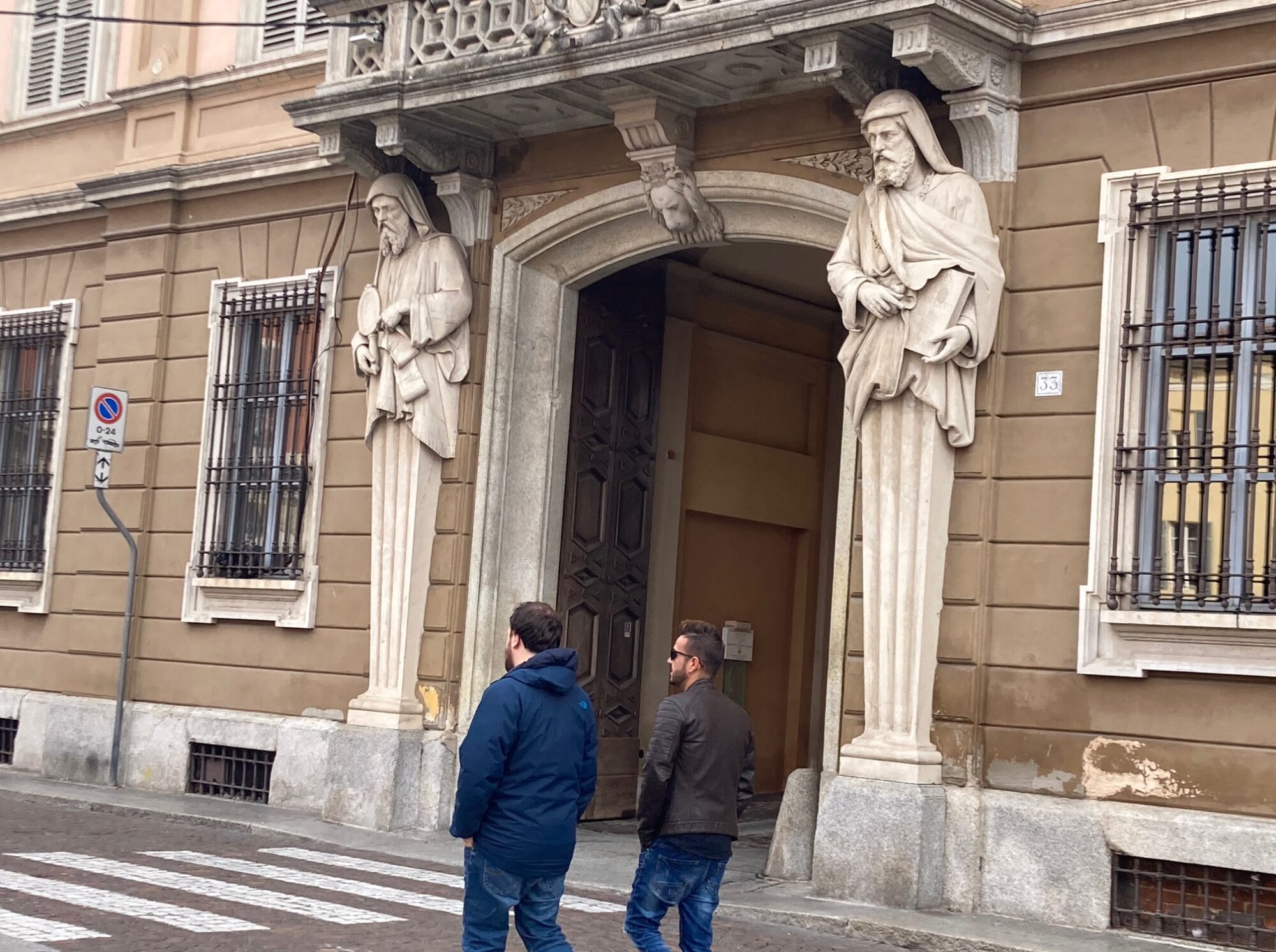
Our visit was on a special Sunday as a bishop was being made a saint at the Duomo, completed in 1233. Its exquisite black and white striped floor and long gray columns are subdued. Pillars in soft sepia tones hold images from the 1200’s. Calm prevails here at the most important cathedral in Northern Italy.
VAL TREBBIA
Near the River Trebbia, we drove past estates with beautiful old dwellings which led to a sheer drop into its verdant valley. It’s said that Ernest Hemingway thought Val Trebbia was the most beautiful valley in all the world. We, too, were smitten. It took our breath in more than one way.
VIANI DI METTEGLIA
Soon enough we corkscrewed our way to Viani di Metteglia. Our hearts were in our mouths, as we climbed up and around through sun-dappled trees, and dark shuttered buildings of stone. Then up to the top of this teeny town, where Alan’s forebears had been farmers. We met Aldo Viani, who turned out to be the only person living on top of the mountain. To our dismay, he was not a relative and was totally uninterested in our search for other Vianis.
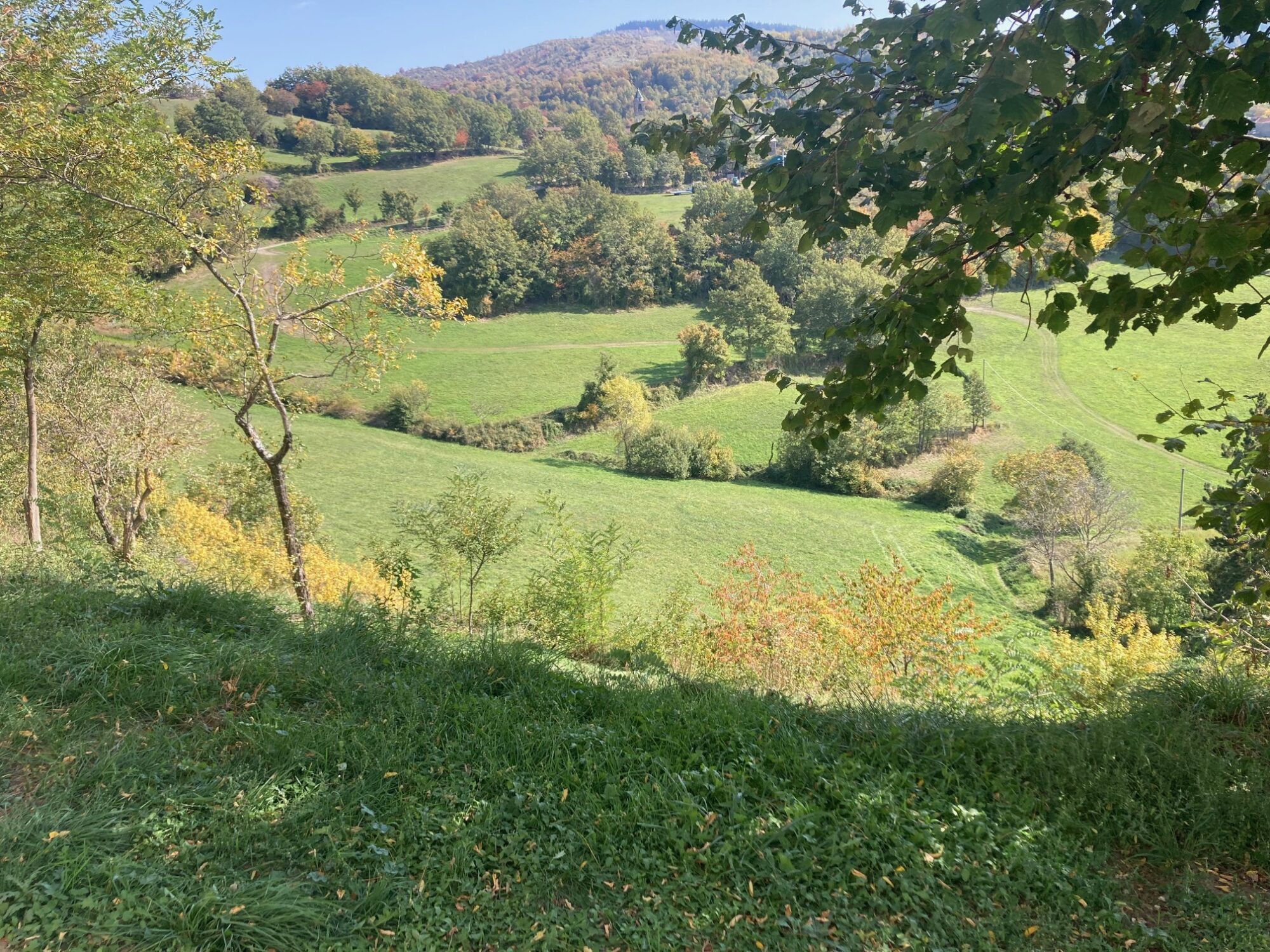
The old part of the town, with its decrepit stone houses and barns, was abandoned. There was one somewhat intact house, Aldo’s. We were the only humans around. Our little group walked the path to the church on the way to the small simple cemetery. We were staggered by the many Viani, Perrini and Rossi names on tidy vaults. In summer, there would be a few people in the new part of Viani at their weekend homes. Now, Viani di Metteglia was deadly silent. Exhilarated and exhausted, we wound our way back down.
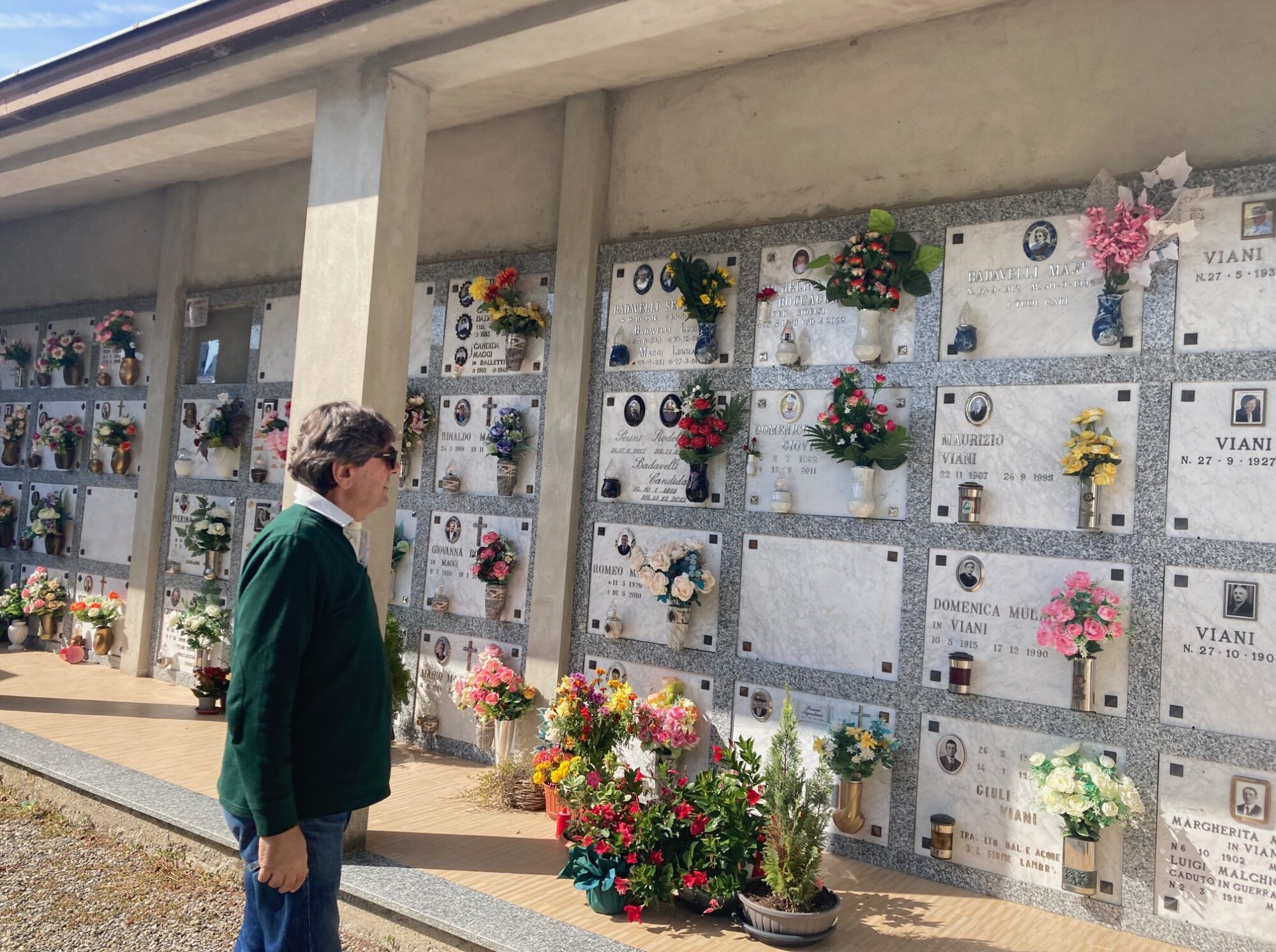
BOBBIO
Later, we set out for Bobbio, a very old city in the heart of Val Trebbia. Its striking concrete bridge was built by the Romans, no less. Alan’s father always spoke of Bobbio when he talked about the family’s roots. No wonder. Bobbio had been the most important cultural center in Northern Italy in its day. Ross King writes about it in “The Bookseller of Florence.”
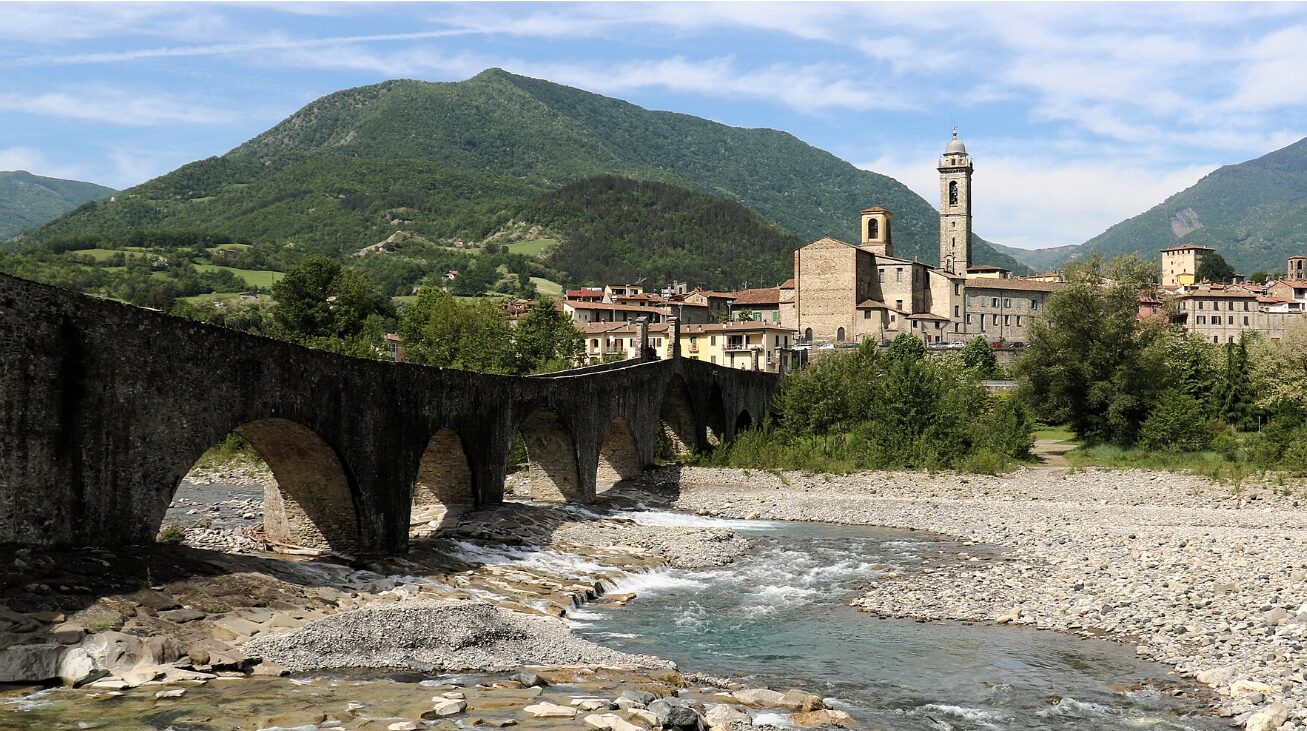
It is a perfect-looking town. Even the porcini mushrooms, perched in front of shops, were flawless. I wanted to live full time near its cobblestoned streets. Bobbio’s magnificent cathedral beckoned, as well as an ancient abbey, Saint Columban. More than a thousand years old, baptisms are still held in Latin at its fount every Sunday.
On our return, we got a better view of the Hunchback Bridge built by the Romans. It wends its way over the Trebbia River, amidst heavenly green spaces.
DINNER IN BIANA
At dinner we were joined by Silvano’s wife Mara and their son. Mara had made, just for us, a book with photos of Metteglia– with room to add more photos, more memories. Mauro’s relative (of course!) owns Trattoria Bellaria in Biana. A former farm building of rustic wood, amidst stone and brick walls, it now welcomes diners with fine china. Alan toasted the table, saying “you are family!” Well, even if they weren’t, they acted like it. Perhaps that’s all that counts.
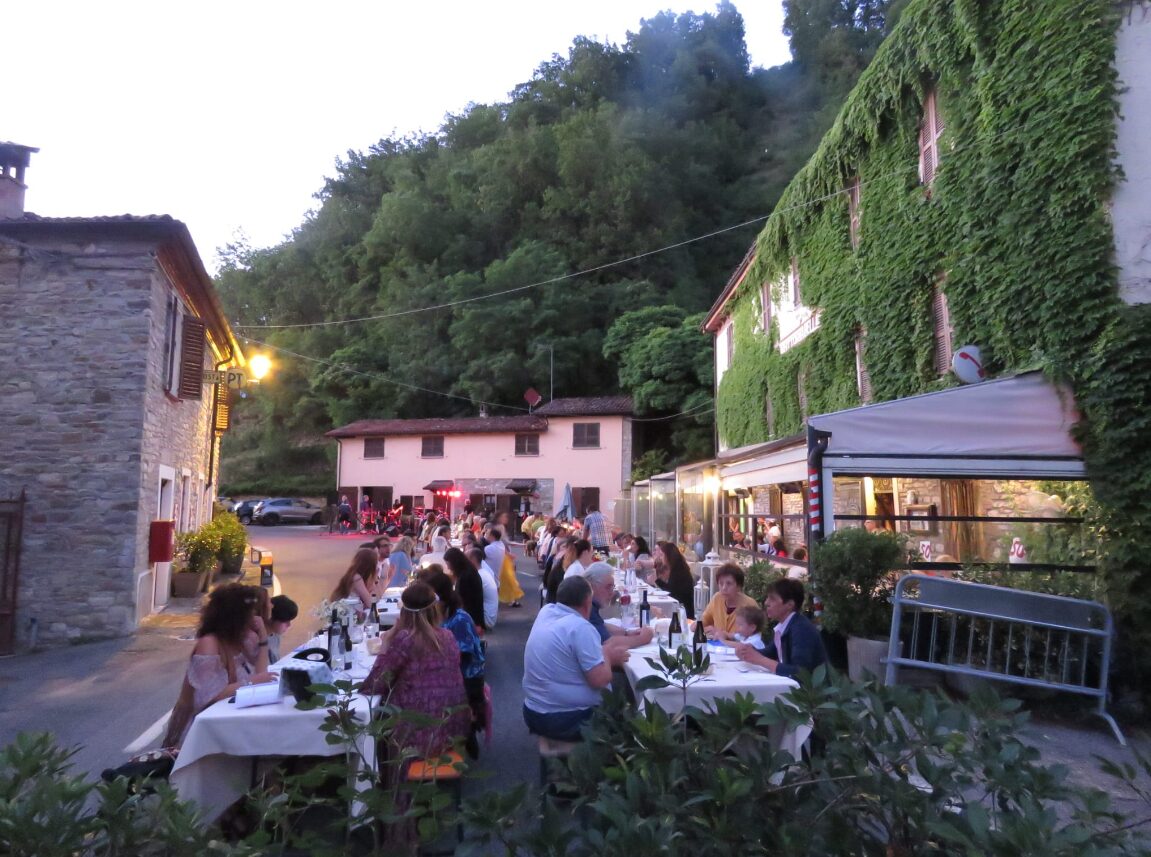
We munched on bortellina stuffed with salumi. Next came everything from anchovies and burrata to pastas of all kinds, finishing with semifreddo and zabaione, light and luscious. We left stuffed and smiling.
VIGOLZONE
On Sunday we drove from Piacenza’s suburbs, through crimson and burnt orange leaves, into the countryside of the Nure Valley to Vigolzone. It is filled with farmstays and wineries, near a Visconti family castle. Sunday lunch brought more new family — Nonna and cousins — who came bearing a gift: copies of letters, dating from the 1930’s, describing their experiences when they first came to live in the Italian part of New York’s Greenwich Village. This cousin was writing back to family–a world away.
We trooped into Agriturismo: La Favorita Restaurant and Equitazione. In this converted barn, the waitress reeled off (no menus) a variety of cold cuts, pastas and crespelle. We stuffed pungent salame crudo into puffs of dough called gnocco fritto, only found in this region. Boards kept going around family-style with the gnocco fritto, every cold cut irresistible. Nonna told us the wine here is not as good as hers from her own vines, but everyone indulged anyway.
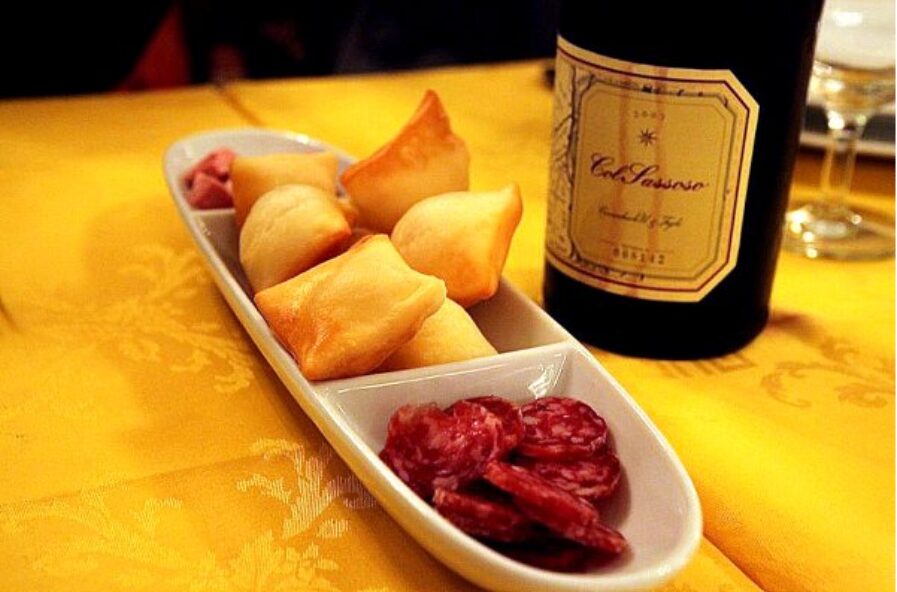
After pasta, we settled on semifreddo. Then arrived numerous plates of pastries to share…a food orgy! No one left their dessert, not even nonna. The food went down well, too well. Next came limoncello and bargnolino (wild berries) liqueurs, as digestives, along with espresso.
Through it all, we happily exchanged stories of our lives with one another. There were such good feelings on the goodbye with these second cousins, true emotion and affection for people we were just beginning to know. But, of course, it’s family!









